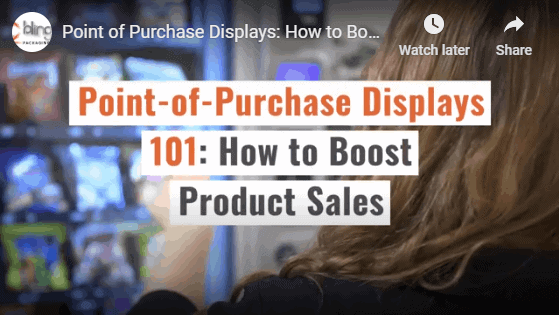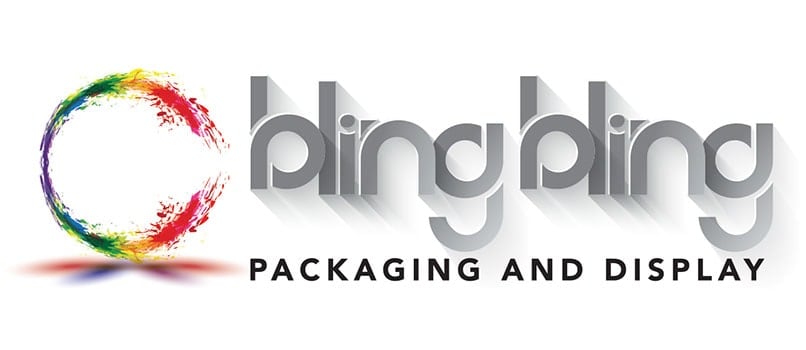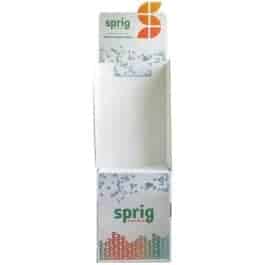In a crowded retail environment, it can be difficult to capture consumer attention for long enough to drive a sale. Point-of-purchase (POP) displays can help address this limitation. Placed throughout stores on shelves or as standalone fixtures, POP displays promote a product at the point-of-purchase, making the customer more likely to place the product in their cart.
When implemented well, POP displays can be an extremely effective tool for building brand familiarity and increasing sales. In this comprehensive guide, we’ll discuss everything you need to know to leverage POP retail for your brand.
- Point-of-Purchase (POP) Displays – All You Need to Know
- POP vs POS Display
- Where POP Displays are Used
- Types of Store Displays
- Display Materials Types
- POP Displays in Retail Marketing – Boosting Product Sales
- Tips for Creating Effective Point of Purchase Displays – POP Marketing
- Measuring POP Display Effectiveness
- Being Strategic: Where to Place Product Displays in Stores
- Why Choose Bling Bling Packaging?
Point-of-Purchase (POP) Displays – All You Need to Know
POP displays are an innovative form of advertisement that involves placing special product displays in strategic positions within a retail store. POP displays may be fabricated from vibrant cardboard, acrylic, metal, or wood and will feature a company’s branding. These displays act as shelving to draw a customer’s attention to the product and promote an impulse purchase.
POP vs. POS Display

POP displays differ from point-of-sale (POS) displays. While POS displays are relegated to a position at the checkout, POP displays can be placed anywhere in the store. This gives POP displays more versatility in form, size, and function. As such, there are many types of POP displays, making it important to consider various style elements and in-store locations to determine which display will best suit your needs, and where it will be most effective.
A key distinction between POP and POS displays is in their versatility. Since POS displays are positioned at the checkout, certain products might be more difficult to display than others. POP displays can be placed anywhere in the store, so they can advertise large products, refrigerated products, and other categories of items that might not fit neatly into a traditional checkout.
POP displays can also be used to drive relevant impulse purchases at strategic points in the store. For instance, a shelf display with corkscrews and reusable wine stoppers is highly effective in the wine aisle, where customers are more likely to realize they need those items. With a POS display, it’s difficult to capitalize on these associations, and so the products highlighted at checkout tend to be more universally useful or appealing, such as snacks, beverages, magazines, and other general sale items.
Where POP Displays are Used
POP displays can be used throughout the retail environment. Some POP displays are small enough to fit on the shelf with the product while others may be standalone fixtures within or at the end of an aisle. The ideal placement for your POP display depends on the style of display, as well as on your goals. Of note, POP displays are used across industries. Grocery stores are just as likely to find success with POP displays as businesses with more niche products to display.
. Types of Store Displays
Point-of-purchase displays can take many different forms, which contributes to their effectiveness and versatility. For example, both chocolate and seasonal decorations are common impulse buys, but you wouldn’t imagine highlighting these items in the exact same way.
Although there are many variations on these categories, the following represent some of the most common varieties:
- Floor displays. Floor displays, or freestanding displays, are standalone shelving units designed specifically to showcase a product or product line. These are often permanent fixtures, although it’s also possible to design custom temporary floor displays from cardboard or a similar material.
- Counter displays. Best for displaying smaller items, counter displays sit on flat surfaces, whether they be the checkout or another kiosk throughout the store.
- Pallet displays. Pallet displays are perhaps the most convenient POP display type as the product can be displayed almost exactly as it was shipped. For bulkier or heavier objects, stacked shipping pallets may simply be rolled onto the shop floor, but unique configurations are also possible.
- Dump bins. Dump bins are a type of pallet display ideal for smaller objects. A dump bin is exactly what it sounds like—the products themselves are piled within a freestanding bucket, which might be made of any number of materials. Dump bins can be customized in many creative ways, whether by constructing them out of clear acrylic to show off the product, or by printing them with colorful advertisements.
- Shelf talkers. Shelf talkers are the most minimalist option for a POP display, consisting of a banner, sign, or hanging display that attracts attention to a shelved product. While only the lightest of products can actually be hung on a shelf talker, plain banners themselves can be just as effective at breaking up the monotony of many similar-looking items.
- End caps. End caps are so common that you might forget they are a form of POP display. These are displays that sit right at the end of an aisle, driving impulse purchases as shoppers pass by. End caps can be slightly more expensive to implement, but they are also extremely effective.
Display Material Types

Each type of POP display can be constructed from a range of different materials depending on the desired look and function.
- Acrylic displays. Available in a range of colorful or transparent options, acrylic displays are durable, yet lightweight and eye-catching.
- Chipboard displays. Chipboard is a sturdy material that’s similar to cardboard, but denser. Chipboard can be used to construct almost any type of display and can support slightly heavier products than a comparable cardboard option.
- Corrugated cardboard displays. Cardboard is equally useful in small countertop displays as in larger, standalone displays, assuming the product is light enough. Corrugated cardboard is popular because it is affordable, lightweight, durable, and can be printed with intricate designs.
For permanent fixtures, metal displays and wood displays are also common. While a metal or wood display can be a more significant investment, they are still affordable, and they offer the most polished appearance of any other option.
- Wood Displays. Whether you opt for a high-end exotic wood or a more standard variety, wood displays offer a feeling of warmth and comfort that attracts customers to the display.
- Metal displays. Metal displays are eye-catching and extremely versatile. Brands might choose a lighter-weight rack design or a sturdy shelving configuration, depending on the product being displayed. Finishes such as powder coating can give an eye-popping, colorful look, while a polished metal exterior offers an attractive shine.
Permanent vs. Temporary POP Displays
Another consideration is whether a POP display will be temporary or permanent. Temporary displays are made of less durable materials and are ideal for limited-time promotions or special brand highlights. Permanent displays, on the other hand, are made from sturdier materials and can become a lasting fixture in your store. Permanent displays might be customized to display one signature item, or they might be more generic, allowing stores to customize the highlighted product throughout the year.
POP Displays in Retail Marketing: Boosting Product Sales
Point-of-purchase displays represent an innovative and highly effective form of marketing. Large, brightly colored displays are more likely to catch a customer’s eye than products on a regular shelf. This higher level of interaction can introduce new customers to your brand and may also draw the attention of repeat customers who have already had a positive experience with your products.

POP displays also capitalize on the shopper’s impulse to purchase something they do not intend to buy. Beyond boosting the probability of a sale, POP displays also bring the following benefits:
- Increase engagement with a brand
- Promote a brand’s values and identity
- Liven up a display space
- Introduce variety into a layout (especially when POP displays rotate seasonally)
- Keep customers browsing for longer
Tips for Creating Effective Point of Purchase Displays – POP Marketing

In designing POP displays, it’s important to stay true to a brand’s values and image while also keeping in mind the constraints of the medium. For the most effective design, consider the following guidelines:
- Incorporate the brand‘s signature imagery and color schemes to build brand familiarity.
- Use bold shapes, colors, and designs wherever possible to attract attention.
- Ensure that any messaging stands out, even from a distance, with the main message positioned at eye-level when the shopper approaches.
- Never let design interfere with functionality. The product should be completely accessible, even when the display is full or almost empty, and messaging should be unambiguous.
The best POP displays are unique enough to catch a wandering eye while sticking to the principles of accessible, unobtrusive design.
Measuring POP Effectiveness
As with any marketing strategy, it’s critical to continuously reassess your investment to ensure that key metrics are improving. Before installing a POP display, make a note of the metrics you’ll be using to assess its effectiveness. These might include sell-through and ROI, among others relevant to your specific situation. Then, at pre-determined intervals, assess these metrics and determine whether sales are increasing.
If sales begin to lag after an initial boost, you can troubleshoot a number of factors such as placement and design. You might also consider whether the display is staying fully stocked. Oftentimes, small adjustments are all it takes to reinvigorate a POP display.
Being Strategic: Where to Place POP Displays in Stores
To determine proper placement for a POP display, develop a strategy based on customer shopping habits and the unique experiences of the particular store. Some of the most common locations include:
- Near checkouts, especially when arranged in an aisle that customers must walk through to reach the checkout
- In the middle of wider aisles, or along the side of narrower aisles
- On the ends of heavily-trafficked aisles
- On countertops throughout the store
- On stacked pallets, where space allows
- Near the entrance
- Near the high-traffic regions of your store, whatever those may be
- Near relevant products to the one being displayed
While most stores have a variety of potential POP placement areas to choose from, some locations will draw more attention than others. Placing Point-of-purchase displays near checkouts, for example, is a highly effective strategy because customers will look at them while they are waiting in line. When customers are walking through the aisles, they are generally more focused on finding what they need, but pausing in a checkout line means that customers are more likely to direct their attention toward the various POP displays.
Placing POP displays on the ends of aisles can also be effective. These displays are more visible than those placed in the center of aisles. While customers may only enter the aisles that shelve products they are looking for, they must walk past the ends of most aisles. This higher traffic level significantly increases the effectiveness of that location.
Why Choose Bling Bling Packaging?
If you aren’t already using POP displays, you’re missing out on an extremely versatile, effective, and affordable marketing tactic. POP displays can be incorporated into nearly any region of your store, promoting sales while adding visual interest that keeps shoppers browsing.
At Bling Bling Packaging and Displays, we specialize in creating custom POP displays that capture the essence of a brand and drive increased sales. We work closely with our customers to design a POP display that best promotes each product. Customers may choose from temporary or fixed displays, and we offer an expansive range of standard and custom design options.
We take pride in fabricating retail-friendly custom POP displays that are easy for store employees to assemble and disassemble. Our in-house design team works closely with each customer to understand their ideas, needs, and marketing plan, at which point they will create a free prototype within 48 hours.
Contact us today to learn more about our custom products or to start designing your POP display.













